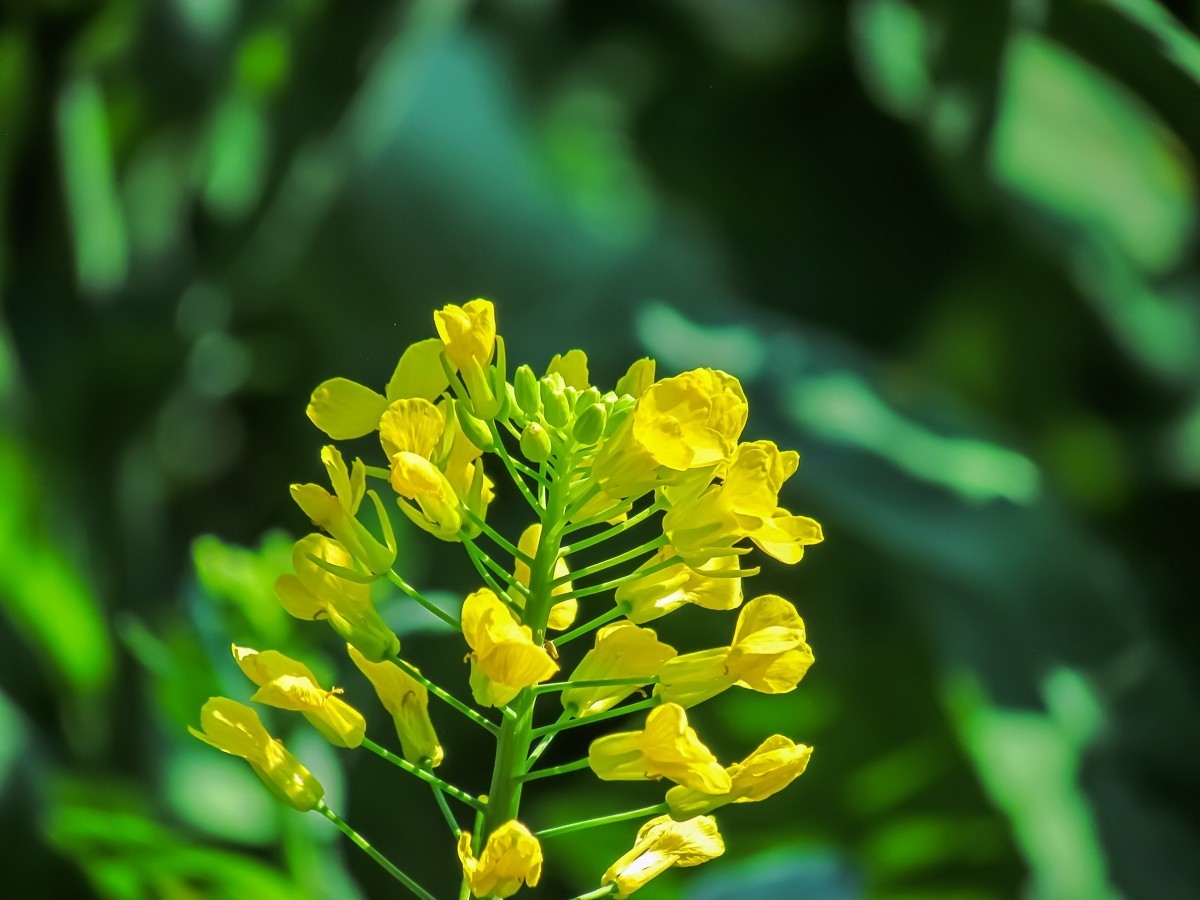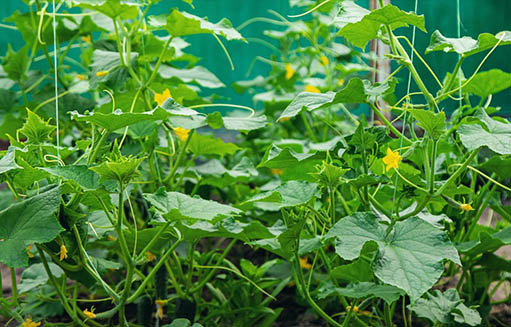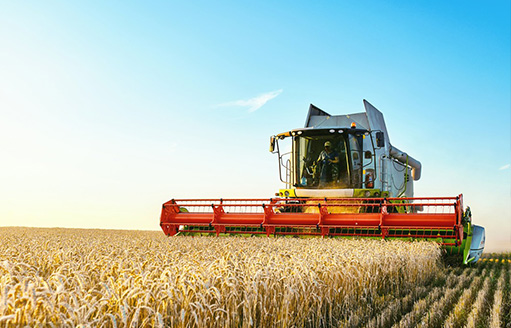Action plan for Ensuring a good harvest in 2024
Scientific and effective prevention and control of pests and diseases is a key measure to reduce losses, increase yield and promote harvest. In 2024, major diseases and pests such as wheat scab, stripe rust, stem rot, rice "double migration" pests, borer, southern corn rust, grass armyworm, soybean root rot, and rape sclerotinia will re-emerge, posing a serious threat to grain and oil production. This program is formulated to scientifically and effectively prevent and control crop diseases and pests, steadily promote pesticide reduction and efficiency, and ensure stable and safe supply of grain and important agricultural products.
1. the situation
According to the monitoring and expert consultation analysis of the national crop disease and pest survey network, major crop diseases and pests are expected to re-emerge in 2024, and the national expected occurrence area is 2.33 billion mu, an increase of 26.2% and 18.4% over 2023 and the actual occurrence area in the past five years, respectively, posing a threat to more than 70% of the crop producing areas, which requires greater organizational efforts. Effective measures should be taken to resolutely curb the momentum of the outbreak, minimize the damage loss, and achieve the goal of "seizing food from pests" to ensure a good harvest.
(1) Major wheat diseases and insect pests.It is expected that wheat "four diseases and one insect" will occur 560 million mu. Scab is a pandemic in the middle and lower reaches of Yangtze River, Jianghuai and Huanghuai wheat areas, and there is also a risk of epidemic in other wheat areas such as the north of Huanghuai. Stripe rust was particularly prevalent in the wheat areas of southwest China and Hanshui River basin, and the epidemic risk in Huanghuai wheat area was significantly higher than that of last year. Stem-base rot occurred more frequently in the two cropping areas of Huanghuai wheat and corn in Shandong, Henan, Shaanxi, Shanxi and southern Hebei. Sheath blight occurred more frequently in Jianghuai and Huanghuai wheat areas. The trend of recurrence of aphid in the wheat area of Huanghuai and North China during the ear stage.
(2) Major rice diseases and insect pests.It is estimated that rice "three pests and two diseases" will occur 1.07 billion mu. Rice planthopper occurs mainly in South China, South Yangtze, north and east Southwest, middle and lower reaches of Yangtze River. The rice leaf roller is mainly found in the eastern part of South China, the eastern part of Southwest China, the central and western parts of Jiangnan and the rice areas along rivers and rivers. Borer was found to occur in the mixed planting area of single and double cropping rice in the south of the Yangtze River and the middle reaches of the Yangtze River, especially in the rice area of the lower reaches of the Yangtze River and the north southwest of China. Sheath wilt occurs especially in central and western South China, northern Southwest, Jiangnan and middle and lower reaches of Yangtze River. The epidemic risk of rice blast is more than medium in the cold and cool rice areas in Northeast China, the hilly and mountainous areas in South China and the rice areas along the Yangtze River and Huai River.
(3) Major maize diseases and insect pests.It is estimated that 580 million mu of corn "four insects and two diseases" will occur. Armyworm is especially prevalent in the southwest, South China and Jiangnan, and in the middle and lower reaches of the Yangtze River, Jianghuai, Huanghuai, Northwest and North China. Corn borer occurs more frequently in summer corn producing areas of Huang-Huai-hai and more frequently in spring corn areas of Northeast China. Cotton bollworm occurs locally in the Huang-Huai-hai area and in the south of Northeast China. The armyworm generally occurs lightly, and concentrated damage will occur in North China, Northeast China, Northwest China and Southwest China. There is a risk of epidemic of southern maize rust in Anhui, Henan, Shandong, Hebei and other Huang-Huai-hai summer maize production areas. Maize small spot disease occurs moderately in Northeast China, North China, Northwest and southwest China.
(4) Major diseases and pests of rape and soybean.It is expected that "two diseases and one pest" of rape will occur 85 million mu. The sclerotinia sclerotinia occurred more frequently in the upper and middle reaches of the Yangtze River in winter rape producing areas such as Hunan, Hubei, Sichuan, Anhui and Jiangxi, and the rape aphids occurred moderately and locally in the southwest and Jiangnan. The root swelling of rape was on the rise in Sichuan, Hunan, Hubei, Anhui, Jiangxi and other local areas. Soybean root rot occurred more frequently in Heilongjiang, and moderately in Inner Mongolia, Sichuan and Anhui.
In addition, potato late blight, grassland borer and locust occurred more frequently in some areas. Rattus norvegicus and other rural rodent infestation occurred in northeast, North, southwest and northwest parts of China. Red fire ants occur more frequently in most of South China, Jiangnan and Southwest China, and the risk increases in the northern Jiangnan and Yangtze River areas. The harm of citrus yellow dragon disease in the main citrus producing areas of South China and Jiangnan showed an increasing trend. Pear fire blight occurred in the pear and apple producing areas of Hexi Corridor in Xinjiang and Gansu.
2. Prevention and control objectives
(1) General Thinking. Focusing on the goals and tasks of "stabilizing, consolidating, improving and transforming" the planting industry, focusing on major grain producing areas, the source areas of diseases and pests, the transition areas of migration and epidemic, and the main hazardous areas, encryption monitoring and early warning, adhering to classified guidance, regional policies, joint prevention and control, vigorously promoting the integration of green prevention and control with unified prevention and control, steadily promoting pesticide reduction and efficiency, and strengthening scientific and safe drug use guidance. Organize emergency prevention and control in a timely manner, strictly prevent large-scale outbreaks of major diseases and pests, minimize damage losses, and make every effort to achieve "insect-grabbing food" and ensure a good harvest.
(2) Main objectives.Through the implementation of the "insect-capture campaign" to ensure a good harvest, the unified organization of the implementation of the three major food crop disease and insect pests and other control area of 1.03 billion mu, and biological control, physical and chemical induction and control, high-efficiency low-risk pesticides and other green control measures into the control and control service content, the control and control coverage rate increased by 1 percentage point over the previous year, reaching more than 46%. The coverage of green prevention and control will be increased by another 2 percentage points to over 56%, and the loss rate of pests and diseases will be kept within 5%.
3. Technical route
Based on early treatment of small, advancing the threshold, highlighting major crops, major diseases and insects, and key areas, the implementation of "one pest, one policy, one disease, one party", classified guidance, joint prevention and control, and coordinated management. At the same time, combined with the implementation of wheat "one spray three control", autumn grain crops "one spray more promotion" and other measures to achieve the organic unity of disease prevention and pest control and yield improvement.
(1) Prevention and control of major wheat diseases and insect pests.Scab highlights the heading and flowering period prevention, the middle and lower reaches of the Yangtze River, Jianghuai, Huanghuai and other common areas have fully implemented the "initiative to attack, see flowers and apply medicine" measures, and the north and North of Huanghuai and other occasional areas have strengthened the "prevention first, see the weather and apply medicine" measures. Stripe rust prominent regional control, joint prevention and control, southwest, Hanshui River basin and other bacterial source areas to fully implement the "drug investigation, hit the surface" measures, reduce the bacterial source base, Huang-Huai-Hai spring epidemic area once found the disease center, timely organization of control and rule, strictly prevent large-scale epidemic. Prevention and control of stem base rot and dry sheath blight in the stage of returning to green and jointing should be carried out to prevent recurrence in the middle and later stages. Aphid highlights the ear stage control, combined with the "one spray three prevention" implementation of standard control, strictly prevent the impact on thousand grain weight.
(2) Prevention and control of major rice diseases and insect pests.Joint prevention and control, regional management and unified control were implemented for the "two-migration" pests of rice, and the control indicators of early rice from overseas insect sources such as South China and Southwest moving into the main descending areas were strictly enforced to reduce the local hazards and reduce the northern migration of insect sources. The prevention and control of early and middle rice ear stage in Jiangnan and the middle reaches of Yangtze River were strengthened to reduce the damage of insect source migration and local migration. In the middle and lower reaches of Yangtze River and Jianghuai rice area, the emphasis is on "controlling the front and the back" to prevent the sudden disaster of rice planthopper in spike period. Adhere to the "front width after strict standard control", focus on protecting the "upper three leaves" (functional leaves). Deep water pupae killing and lamp induced killing of adult worms were promoted to lower the occurrence base and reduce the amount of eggs in the field, and scientific medicine was used to catch the eggs from the high incubation stage to the young larva stage in the frequent recurrence area to reduce the harm of stem decay. On the basis of the comprehensive measures such as seed mixing with medicine and transplanting with medicine to control the epidemic of rice blast, the prevention of rice blast at the heading stage should be emphasized in the areas with frequent recurrence. It should be emphasized to prevent and control grain wilt at tillering stage and jointing stage, and to control the horizontal spread of the disease to increase the disease and vertical spread to increase the harm.
(3) Prevention and control of major maize diseases and insect pests.We will continue to implement "three zones and four belts" to prevent and control Armya armya, reduce damage losses in Southwest China, South China and Jiangnan, and reduce the risk of recurrence in major corn producing areas such as Huang-Huai-hai. Focus on strengthening the monitoring and early warning of armyworm, and timely grasp the centralized and unified prevention and control of high-density point pieces. The maize borer and cotton bollworm should be controlled by bee release and green prevention and control measures such as light, sex and food attraction, and the Huang-Huai-hai and other areas with repeated or rising hazards should be emphasized to prevent and control the large trumpet stage. Once the epidemic trend of southern corn rust disease is found, it should be immediately sprayed to prevent and strictly control the epidemic. Maize small spot disease pays attention to scientific fertilization and water use, Northeast, North China, Huanghuai and other common areas, combined with the implementation of "one prevention and double reduction" from the trumpet stage to the waxing stage, "one spray and multiple effects" and other spraying agents to prevent and reduce the risk of recurrence in the later stage.
(4) Prevention and control of other diseases and insects.Prevention of sclerotinia sclerotinia in rape should be carried out mainly at the beginning of flowering period, and drugs should be used again at the blooming period when necessary in frequent recurrence areas. Focus on the standard control of rapeseed aphids, when the rate of aphid branches in the horn fruit period reaches more than 10%, timely application of medicine control. In areas where soybean root rot occurs frequently or harm increases, seed coating or pharmaceutical seed dressing measures should be implemented. On the basis of selecting healthy seedlings and removing diseased plants in orchards, the unified control of psyllid at shoot stage should be emphasized. Fire blight of pear should be removed in time and preventive measures should be taken to apply medicine during flowering. Red fire ants focus on the quarantine supervision of seedlings with soil and lawn grass, and implement the spring and autumn unified control rule. Rattus norvegicus and other rural areas focus on promoting poison bait stations and fences+Traps, mousetraps and other technologies. Fruit, vegetable and tea pests and diseases should focus on integrating and promoting green prevention and control and pesticide reduction technology models according to local conditions.
4. Key Tasks
(1) Strengthening monitoring, forecasting and early warning.Further improve the monitoring and early warning network for crop diseases and pests, deploy monitoring stations in encryption, add automated and intelligent monitoring facilities, implement "integrated monitoring, one-game scheduling, and one-map command", and improve real-time monitoring and early warning and other end-detection capabilities. We will strictly implement the system of weekly reporting of major diseases and pests and the system of reporting sudden outbreaks on the same day, timely release of forecast and early warning information, and make scientific decisions to guide prevention and control. Accelerate the popularization and application of rapid detection technology for quarantine pests, strengthen the monitoring and management of resistance to diseases and pests, and promote the selection of drugs for the right disease, drug rotation, and appropriate dosage of drugs at the right time.
(2) Promoting the integration of green prevention and control with unified prevention and control.Focusing on major grain crop producing areas, areas with advantages in cash crops, and ecological protection areas such as the Yangtze Economic Belt and the Yellow River Basin, we will accelerate the integration and promotion of a number of green prevention and control, pesticide reduction and efficiency technology models that are economical, simple and effective and acceptable to farmers. Strengthen the management and service guidance of professional prevention and control organizations, continue to focus on the 3,670 well-equipped, standardized management of professional prevention and control organizations with an annual service of more than 10,000 mu, and incorporate green prevention and control measures such as biological control, physical and chemical induction and control, and high-efficiency low-risk pesticides into the service content of unified prevention and control, so as to promote the integrated development of green prevention and control and unified prevention and control. We will continue to reduce the amount of chemical pesticides and increase their efficiency.
(3) Strengthen guidance on scientific and safe drug use.We will organize trials and demonstrations of new pesticides, new devices, and new technologies for the prevention and control of wheat stem base rot, southern corn rust, and Borer, and screen and promote a batch of high-efficiency, low-risk pesticides with low dosage and good control effectiveness. Strengthen scientific and safe drug use knowledge and skills training and service guidance, and organize the investigation of potential risks of pesticide use. Continue to do a good job of cowpea drug reduction, control and residual management, and integrate and promote the "pest control network.+Such as green prevention and control, pesticide reduction and efficiency improvement technology model, accelerate the biological control instead of chemical control, efficient low-risk pesticides instead of old resistant pesticides "double substitution" process, reduce the risk of pesticide residue pollution.
(4) Strict plant quarantine supervision.With the focus on national seedling breeding bases, large and medium-sized seedling production and management enterprises, and major seedling distribution centers, efforts will be made to strengthen the whole-chain quarantine supervision of crop seedling production, transportation, and sales. We will do a solid job in the quarantine of seeds and seedlings from their origin, and increase the inspection of quarantine certificates and sampling reinspection of cross-region transport. If the infected vaccine is found, the source tracing shall be strengthened and scientific disposal shall be carried out according to law. We will severely crack down on illegal activities such as unlicensed transportation, the use of fake certificates, and inconsistent cargo certificates. Strengthen the risk analysis and quarantine of the first introduced and high-risk seedlings abroad.
5. Safeguard measures
(1) Strengthening accountability.Continue to include the prevention and control of major diseases and pests into the assessment of provincial Party committees and governments to implement the responsibility system for arable land protection and food security, continue to strengthen the construction of grassroots plant protection systems, implement the relevant provisions of the Regulations on the Prevention and Control of Crop Diseases and Pests, such as government-led and territorial responsibility, consolidate responsibilities, refine work measures, optimize prevention and control programs, arrange and deploy early, strengthen supervision and guidance, We will ensure the smooth implementation of the campaign to ensure a good harvest.
(2) Strengthen guidance services.Timely issue and distribute technical plans for the prevention and control of major crop diseases and pests, establish a piecewise responsibility system, dispatch capable forces to carry out guidance in fields and on the front lines of prevention and control during key periods of prevention and control, organize on-site observation and technical training, demonstrate and guide farmers to adopt comprehensive prevention and control measures, scientifically select drugs, safely use drugs, and implement green prevention and control technologies. Strictly prevent workplace safety accidents caused by the use of pesticides.
(3) Strengthening financial support.According to the needs for the occurrence and prevention and control of major crop diseases and pests, the Ministry of Agriculture and Rural Affairs, together with relevant departments, will arrange the central agricultural disaster prevention and reduction funds to support local governments in carrying out relevant monitoring and control work. Local governments should make good use of central financial funds to ensure that monitoring and prevention measures are in place.
(4) Strengthen publicity and guidance.We will strengthen information reporting to ensure that there is information above, voices outside, and notifications below. We will make full use of media platforms such as television, radio, newspapers, the Internet, and public accounts to vigorously publicize good experiences, good practices, and good examples from all over the country, and create a good public opinion atmosphere for the progress of our work.
(6) Action arrangements
(1) Develop a plan of action.In early March, the action plan was formulated and issued, scientific research and judgment of the trend, and clear objectives and tasks, technical routes and work requirements. Before the end of March, the agricultural and rural departments of each province will formulate specific implementation plans and report them to the planting Management Department of the Ministry of Agriculture and Rural Affairs.
(2) Timely mobilization and deployment.From March to July, on-site meetings and video meetings were held for the prevention and control of major diseases and pests in winter rape, major diseases and pests in wheat ear stage, seed mixing with soybean medicine, and major diseases and pests in autumn grain, respectively, and the prevention and control work was mobilized and arranged by stage, crop and region.
(3) Accurately discuss trends.In late March, mid-April, mid-late May and mid-July, conferences were held on the occurrence trend of major diseases and pests in the middle and late stages of wheat, summer locust, early rice and autumn grain crops, and experts were organized to scientifically analyze the occurrence of major diseases and pests in locust and wheat, rice, corn, soybean and oilseed rape crops, and accurately release forecast and early warning information.
(4) Strict information submission.The prevention and control information of major diseases and pests in wheat from March to June, maize from April to September, and rice from June to September shall be reported "once a week". At the same time, we will strictly implement the system of reporting new outbreaks of major diseases and insects on the same day, and keep abreast of the occurrence of prevention and control developments.
(5) We will strengthen research and guidance.From mid-March to mid-May and mid-August to mid-October, a system of piecemeal liaison was established, and working groups were dispatched to timely dispatch the occurrence and prevention progress of major diseases and pests in summer and autumn grain, and to guide and assist local authorities in implementing prevention and control measures by combining daily contact with on-site guidance at key periods. At the same time, timely carry out green prevention and control and safe drug use tour guidance and special research to ensure the quality and safety of agricultural products.







